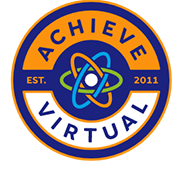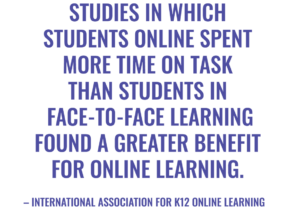
Virtual learning is a highly adaptable field; quick to meet the demands of different learners and support the varying needs of educators. An audience calling attention more and more is that of gifted children, and how educators approach these learners to maximize their education.
What does the term “gifted child” mean?
Gifted children are defined as those who are highly able in the classroom. They are quick to understand methods and adapt to new material. Some overlook these high achievers, considering their self-sufficiency as an indicator their education is effective. But, gifted children need heightened measures to further their performance.
More than ever, educational institutions recognize the varying needs of their classrooms and students. Building tiered learning systems and re-evaluating standardization in performance has lent itself to personal attention and individual-focused learning.
Most often, many equate shifts in the educator attentiveness to the individual to those students who display need for improvement. However, this model allows growth at varying abilities, including high performers.
Why virtual learning works for gifted children
Virtual learning is an ideal fit for the gifted learner. It allows for the differentiation from the classroom structure. Classrooms can often create challenges for a gifted learner. Virtual learning programs reflect an individual pace and prowess, and allow high achievers or quick adapters to move at a pace they’re most comfortable in. Opposed to moving at the pace of the populous, gifted children can move at an appropriate speed for themselves, which might be faster than their peers.
Gifted children also appreciate concept building and flexibility. Virtual learning can allow both focus and distraction, building on key themes in study, but allowing the flexibility to do exterior research on an accessible platform and outside online resources. Gifted children have a high pursuit of their interests and allowing self-discovery online benefits both educator-led and self-guided study.
Many virtual learning systems also allow for peer participation as well as individual practice. Gifted learners can be strong influencers to peers and allow them to strengthen their own teamwork and people skills in tandem with academic achievement. Virtual learning can mirror in-classroom behavior, allowing for individual and group activities in a digital space becoming more familiar in up-and-coming generations.
What virtual learning programs can do to serve gifted children?
How do educators further virtual learning tools for this audience? Intentionally considering how these children learn can reveal the different techniques gifted children need to thrive.
Gifted children are highly active and quick to adapt. Most lesson plans will come easy, and gifted children will anticipate a next level of instruction that an educator may not be able to provide immediately. Virtual learning programs can utilize that self-pace and allow gifted children to consume a volume that keeps them focused. Understanding this, programs that offer clear instruction and set goals encourage high achievers and make each stage and phase feel accomplishable.
Similarly, tiered learning and learning in stages support gifted children. These learners are highly apt to understanding the bigger picture and can benefit from balancing larger or longer-term goals with tangible steps. This can also increase motivation throughout lessons, as gifted children can be quick to become unmotivated if not challenged.
Some of these students succeed highly in certain areas, but not in all. Eager to pursue interests and areas that captivate their minds, gifted children seek exploratory discovery. Virtual learning can create a more freeform environment than classroom teachings and take students on a journey that not only focuses on key themes but builds branches to other interests. This creates benefit in allowing that self-learning by interest, but also can incorporate underserved areas into the subject matter that piques their interests most. A flexible curriculum online allows gifted children to build skill sets in their most accomplished areas, and also the areas they could focus further on.
Virtual learning is often activity based, which helps motivate all learners. Gifted children can become apathetic about areas they feel they have already achieved. These activities build high engagement and make learning, at any level, more fun. Virtual learning that is activity centered or can incorporate activities and participation, can best serve a gifted child.
While virtual learning can incorporate peers, independent study is an ideal fit for most gifted children. Inside the classroom, highly able learners can be subject to critique or bullying from their peers, impacting performance or down turning performance to meet societal expectations. Virtual learning that rewards high performance independently is a great captivator for these learners.
Virtual learning can help gifted children reach success
Virtual learning continues to grow alongside the needs of students and their educators. As gifted children build different demands for educators, virtual learning can fill the gaps.
Online education can further a gifted child’s performance. View Achieve Virtual’s online curriculum to learn more.


